Fitting a Safari snorkel to a petrol engine based Holden Jackaroo
(aka Isuzu Trooper,Isuzu Bighorn,Vauxhall Trooper,Subaru Bighorn,Acura SLX,Chevrolet Trooper,Opel Monterey,Honda Horizon)
fitting a Safari snorkel (SS200R/SS250R) to a Holden Jackaroo SE LWB (UBS98)(2002) 3.5L V6 4VE1 Petrol.
It is described in the Jackaroo discussion forums that the Safari snorkel can only be
fitted to a Jackaroo with a diesel engine, because the air filter box for the diesel
engine is quite different to that of a petrol engine based Jackaroo.
It's not quite true, it is in fact quite easy to install the Safari snorkel to a Jackaroo
with a 3.5L V6 petrol engine.
It can be done with a couple of simple modifications to the existing inner guard
plastic mount and also to the end of the snorkel inner guard plastic pipe, basically
trimming the plastic pipe with a hacksaw, so that you end up with a very snug fitting,
it is quite coincidental that the corresponding plastic pipes are at the right sizes
to create a wedged fit.
The other thing to do is adding some soft rubber trim to the dust separator to give a
air tight fit, noting to leave a small gap 1-2mm at the lower edge to allow water to
escape prior to entering the dust separator chamber.
The dog-leg pipe (SS200R) for the diesel airbox is not required, same for some of the clamps,
but the external pipe and hole cutting remains the same.
NOTE: whether this works for a pre-1998 3.2L V6 petrol, I dont know, but looking at pictures
of those engine bays, the airbox and plastic plumbing looks the same. But the above
description should be valid for 1998 through 2004 3.5L V6 petrol based Jackaroos.
NOTE: do not seal pipe joints with a silicon based glue, as vapours can damage the MAF sensor.
NOTE: file off any plastic burs where you have cut the pipe, as you dont want these getting
past the air filter.
Fuel consumption : city driving no noticeable difference, but highway driving ~100km/h
it certainly seems better on fuel consumption. I guessing from about 14L/100km down to 13L/100km,
maybe as low as 12L/100km (using 98 octane). The air filter certainly seems cleaner
now after driving on dirt roads, now it not sucking hot dusty air from under the front mudguard
and from within the engine bay itself as the standard plastic plumbing is not sealed at all.
The normal way it gets air into the airbox was a joke. Not surprising the airbox was
full of dust and leaves at the pre-airfilter stage.
Addendum Nov 2020:
done some good highway trips recently, getting some better fuel consumption figures, at 110km/hr
with 98octane on the Hume Highway I was getting 11L/100km, if do 90km/hr it dropped down near 10L/100km,
compared to my original two Jackaroos could not get any better than 12.5L/100km
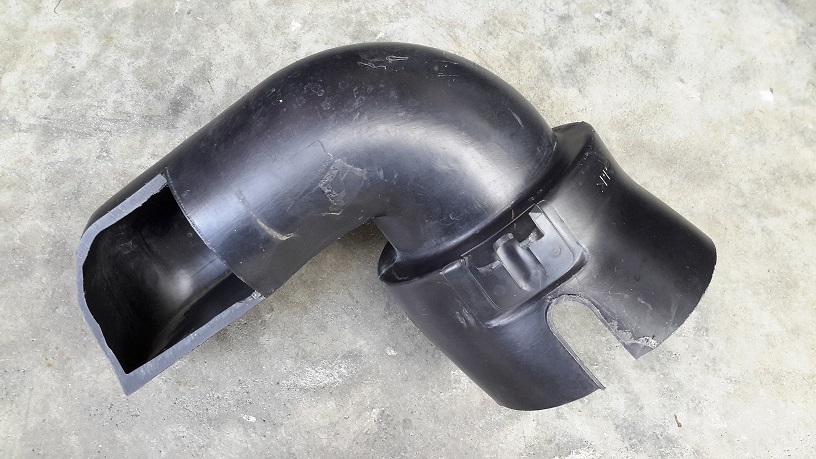
1. original air pickup pipe, this is in behind front mudguard
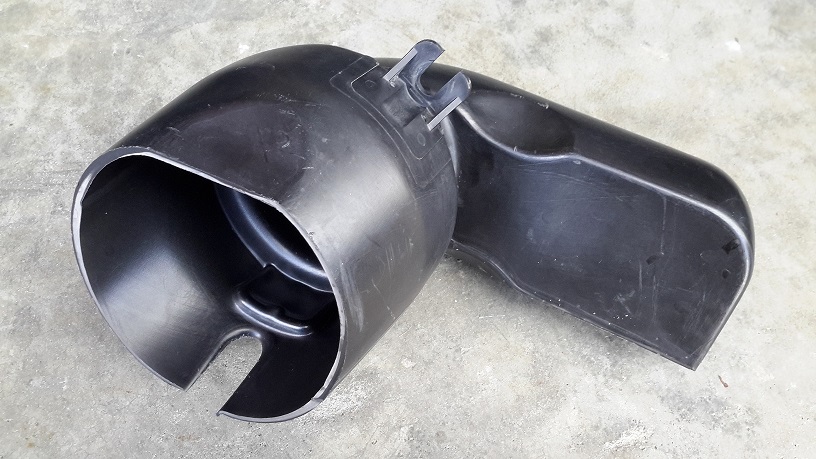
2. original air pickup pipe, this is in behind front mudguard
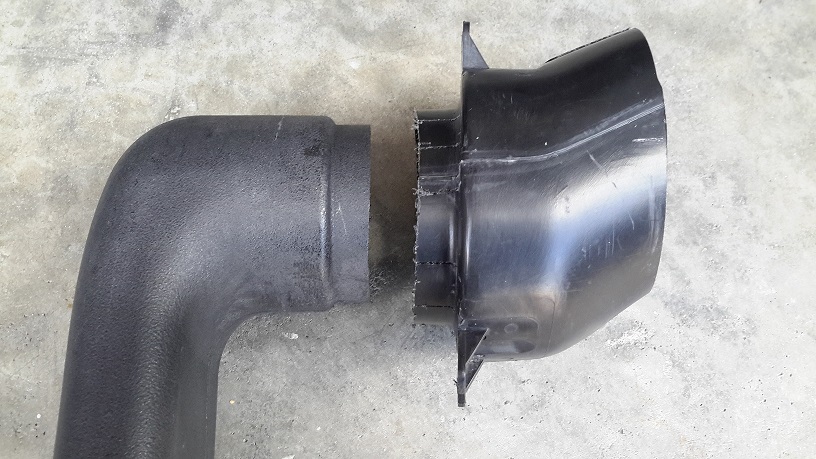
3. I cut off the original air inlet elbox, leaving about 1cm remaining, then first attempt at
trimming the inner guard snorkel pipe
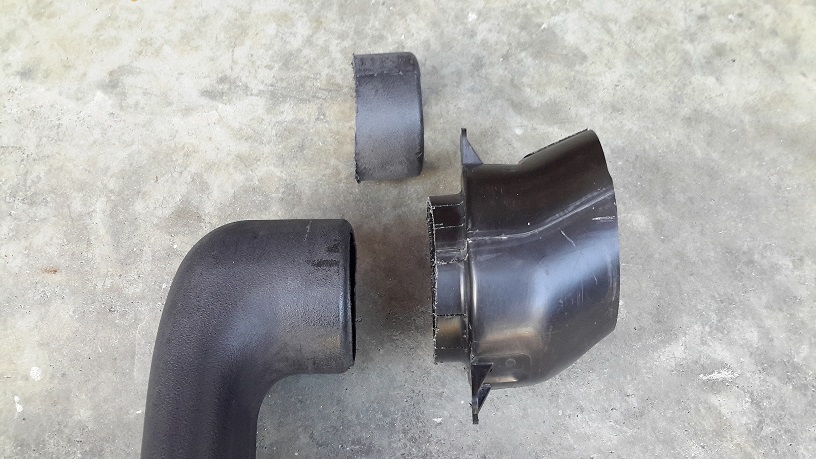
4. then I cut more off the snorkel pipe, as I was worried it might touch the dust separator unit
but I probably could have got away with the original cut, I also cut some slits in the original
pipe to allow expansion to give a tight fit
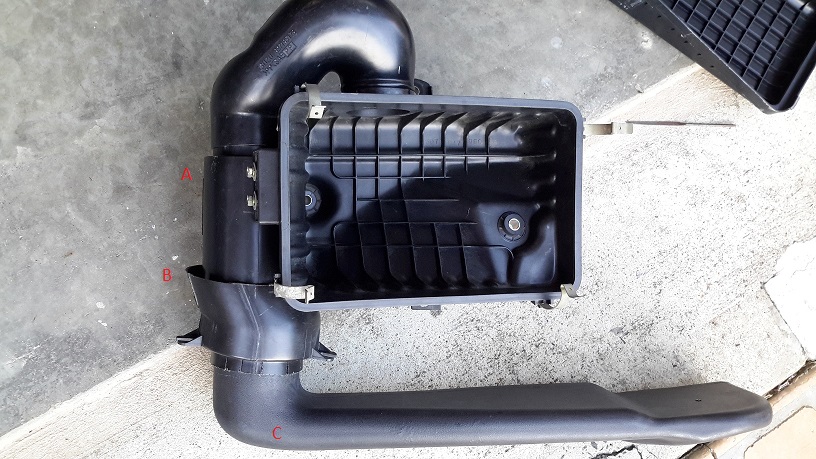
5. this is the complete assembly laid out, prior to fitting back into the engine bay
A.the dust separator unit, B.put the rubber trim around the leading edge of the dust separator
so it fits snug and seals the outer plastic guide. C.the Safari inner guard pipe
BACK TO JACKAROO INDEX PAGE




